Business
A tale of two countries – Drill, Baby, Drill vs Cap, Baby, Cap
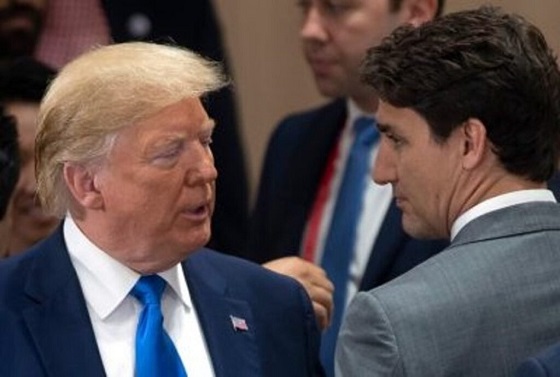
From EnergyNow.ca
By Deidra Garyk
Analysis of the U.S. Election and the Canadian Oil and Gas Emissions Cap
Monday, November 4, the Canadian federal government announced the long-awaited draft emissions cap for the oil and gas industry.
The next day, the world’s largest economy held an election that resulted in a decisive victory for the position of 47th President of the USA.
With the GOP (Republicans) taking a commanding lead with 53 out of 100 possible Senate seats, and two more still to be confirmed, they have a majority that can help move along their plans for at least the next two years. Rumoured expectations are that they’ll take the House too, which will further solidify President-elect Trump’s mandate.
As part of Trump’s campaign platform, Agenda47, he promised “to bring Americans the lowest-cost energy and electricity on Earth.” The agenda pledged that “to keep pace with the world economy that depends on fossil fuels for more than 80% of its energy, President Trump will DRILL, BABY, DRILL.”
The platform also states that under his leadership, the US will once again leave the Paris Climate Accords, and he will oppose all Green New Deal policies that impact energy development. He also plans to roll back the Biden administration’s EV mandates and emissions targets, while advocating for low emissions nuclear energy.
It isn’t a guarantee that he will do anything that he says; however, if the past is any indication, we can expect Trump to follow through on his energy and climate promises.
Even though Canada and the USA are on a contiguous land mass, they could not be farther apart in energy and climate ideology.
On the northern side of the border, a day before, Canada’s green avengers of the Liberal cabinet congregated for a press conference to jubilantly announce their emissions cap, which has been studied and determined to be a defacto production cap. CAP, BABY, CAP!
Claims that the new rules go after pollution, not production, should be met with scepticism. If pollution is the problem, there would be blanket emissions caps on all heavy emitting industries and imported oil and gas would be subject to the same requirements, but it is not. I’m not sure how else to read it other than a willful slight with a sledgehammer against the Canadian oil and gas industry.
Especially since Natural Resources Minister Jonathan Wilkinson said that this is a backstop to ensure the Pathways Alliance does what they say they will. I wonder if the Pathways folks feel like they have a giant target on their backs… and fronts?
The hour-long press conference was a lesson in how to deceive with a straight face. Most of the Liberals’ claims have either been discredited or are unsubstantiated as to be meaningless.
Wilkinson, a Rhodes Scholar, calls this cap an “economic opportunity” because he believes that for Canadian oil and gas, climate change is a competitive issue, for both combusted and non-combusted products. Square that circle when no other country on the planet has an emissions cap on its oil and gas industry.
Nonetheless, the Liberals expect production to increase, which is counter to what they say out of the other side of their mouths – that oil and gas demand will peak this year, and we are not going to be using it much longer so we should just shut it all down.
Wilkinson excitedly announced the need for thousands and thousands of workers to build the decarbonization infrastructure of the new energy future. However, the Department of Environment’s Cost-Benefit Analysis Summary contradicts this claim, citing thousands of job losses.
The Study also identifies that the costs from the plan will be borne by Canadians. The Conference Board of Canada expressed similar concerns, but they were dismissed by the politicians on stage.
Edmonton MP and Minister of Employment, Workforce Development, and Official Languages Randy Boissonnault, also known as “The Other Randy” for his ethical mis-steps, put on one of the best shows of the press conference. He speaks so convincingly that you almost believe him. Almost.
He claimed that when he was campaigning last election during the Covid pandemic, the number one topic at the doors was climate change. Edmontonians wanted to talk about climate change over the global pandemic that was disrupting their lives? Yeah, right.
The Other Randy praised Ministers Guilbeault and Wilkinson for working with industry on the regulations and promised that Canadian workers will be part of the consultation and final rules. Forgive me for being sceptical.
The Spiderman-like Steven Guilbeault, Minister of Environment and Climate Change, said that oil companies have seen record profits, going from $6.6 billion pre-pandemic to $66 billion post-pandemic, and the Liberals want that extra money used on projects they approve of, namely ones that are climate-related.
Guilbault believes this cap is necessary for prosperity and energy security, along with being good for workers and “for good union jobs”. It’s not often talked about, but within the feds’ climate plans is a push for unionizing jobs. It was top-of-mind for the Deputy Minister of Labour when I was part of a delegation to Ottawa last year. She was most interested in learning about how many oil and gas jobs are unionized and showed visible displeasure at finding out that most are not.
The press conference seemed to be more of a one-sided political bun fight, with a disproportionate amount of time spent talking smack about Pierre Poilievre, Premier Danielle Smith, and Premier Scott Moe. Perhaps demonstrating the Liberals’ trepidation about the future since the final regulations will come out late next year and go into effect January 1, 2026, when it’s likely they will be out of office.
With the climate zealots out of power, enforcement may be a challenge. What if companies don’t meet the arbitrary targets and deadlines imposed by the rules? What if companies don’t buy the required credits? A reporter asked, but Guilbeault didn’t give an answer in his response. I guess we will have to wait to see what changes are made to the Canadian Environmental Protection Act (CEPA), the enforcement regulations.
Wilkinson said climate change is a “collective action problem” that must be addressed as it is the “existential threat to the human race.” This gives you a sense of how they see things – there is a problem and government is the solution.
Meanwhile, energy policy is a “Day 1 priority” for Trump. As a businessperson, he understands that demand is growing, and limited regulations are the way to develop all forms of energy.
Even if industry can meet the emissions reduction targets – there are a variety of opinions on the proposed rules – it does not mean the regulations should be implemented. Canada’s real per capita GDP is 73 per cent of America’s, so as Canada goes hard on emissions reduction regulations, if investment moves south, that number is not going to improve. Don’t let them tell you otherwise.
Deidra Garyk is the Founder and President of Equipois:ability Advisory, a consulting firm specializing in sustainability solutions. Over 20 years in the Canadian energy sector, Deidra held key roles, where she focused on a broad range of initiatives, from sustainability reporting to fostering collaboration among industry stakeholders through her work in joint venture contracts.
Outside of her professional commitments, Deidra is an energy advocate and a recognized thought leader. She is passionate about promoting balanced, fact-based discussions on energy policy and sustainability. Through her research, writing, and public speaking, Deidra seeks to advance a more informed and pragmatic dialogue on the future of energy.
Automotive
Ford’s EV Fiasco Fallout Hits Hard


From the Daily Caller News Foundation
I’ve written frequently here in recent years about the financial fiasco that has hit Ford Motor Company and other big U.S. carmakers who made the fateful decision to go in whole hog in 2021 to feed at the federal subsidy trough wrought on the U.S. economy by the Joe Biden autopen presidency. It was crony capitalism writ large, federal rent seeking on the grandest scale in U.S. history, and only now are the chickens coming home to roost.
Ford announced on Monday that it will be forced to take $19.5 billion in special charges as its management team embarks on a corporate reorganization in a desperate attempt to unwind the financial carnage caused by its failed strategies and investments in the electric vehicles space since 2022.
Cancelled is the Ford F-150 Lightning, the full-size electric pickup that few could afford and fewer wanted to buy, along with planned introductions of a second pricey pickup and fully electric vans and commercial vehicles. Ford will apparently keep making its costly Mustang Mach-E EV while adjusting the car’s features and price to try to make it more competitive. There will be a shift to making more hybrid models and introducing new lines of cheaper EVs and what the company calls “extended range electric vehicles,” or EREVs, which attach a gas-fueled generator to recharge the EV batteries while the car is being driven.
Dear Readers:
As a nonprofit, we are dependent on the generosity of our readers.
Please consider making a small donation of any amount here.
Thank you!
“The $50k, $60k, $70k EVs just weren’t selling; We’re following customers to where the market is,” Farley said. “We’re going to build up our whole lineup of hybrids. It’s gonna be better for the company’s profitability, shareholders and a lot of new American jobs. These really expensive $70k electric trucks, as much as I love the product, they didn’t make sense. But an EREV that goes 700 miles on a tank of gas, for 90% of the time is all-electric, that EREV is a better solution for a Lightning than the current all-electric Lightning.”
It all makes sense to Mr. Farley, but one wonders how much longer the company’s investors will tolerate his presence atop the corporate management pyramid if the company’s financial fortunes don’t turn around fast.
To Ford’s and Farley’s credit, the company has, unlike some of its competitors (GM, for example), been quite transparent in publicly revealing the massive losses it has accumulated in its EV projects since 2022. The company has reported its EV enterprise as a separate business unit called Model-E on its financial filings, enabling everyone to witness its somewhat amazing escalating EV-related losses since 2022:
• 2022 – Net loss of $2.2 billion
• 2023 – Net loss of $4.7 billion
• 2024 – Net loss of $5.1 billion
Add in the company’s $3.6 billion in losses recorded across the first three quarters of 2025, and you arrive at a total of $15.6 billion net losses on EV-related projects and processes in less than four calendar years. Add to that the financial carnage detailed in Monday’s announcement and the damage from the company’s financial electric boogaloo escalates to well above $30 billion with Q4 2025’s damage still to be added to the total.
Ford and Farley have benefited from the fact that the company’s lineup of gas-and-diesel powered cars have remained strongly profitable, resulting in overall corporate profits each year despite the huge EV-related losses. It is also fair to point out that all car companies were under heavy pressure from the Biden government to either produce battery electric vehicles or be penalized by onerous federal regulations.
Now, with the Trump administration rescinding Biden’s harsh mandates and canceling the absurdly unattainable fleet mileage requirements, Ford and other companies will be free to make cars Americans actually want to buy. Better late than never, as they say, but the financial fallout from it all is likely just beginning to be made public.
- David Blackmon is an energy writer and consultant based in Texas. He spent 40 years in the oil and gas business, where he specialized in public policy and communications.
Business
Ottawa Pretends To Pivot But Keeps Spending Like Trudeau

From the Frontier Centre for Public Policy
New script, same budget playbook. Nothing in the Carney budget breaks from the Trudeau years
Prime Minister Mark Carney’s first budget talks reform but delivers the same failed spending habits that defined the Trudeau years.
While speaking in the language of productivity, infrastructure and capital formation, the diction of grown-up economics, it still follows the same spending path that has driven federal budgets for years. The message sounds new, but the behaviour is unchanged.
Time will tell, to be fair, but it feels like more rhetoric, and we have seen this rhetoric lead to nothing before.
The government insists it has found a new path, one where public investment leads private growth. That sounds bold. However, it is more a rebranding than a reform. It is a shift in vocabulary, not in discipline. The government’s assumptions demand trust, not proof, and the budget offers little of the latter.
Former prime ministers Jean Chrétien and Paul Martin did not flirt with restraint; they executed it. Their budget cuts were deep, restored credibility, and revived Canada’s fiscal health when it was most needed. Ottawa shrank so the country could grow. Budget 2025 tries to invoke their spirit but not their actions. The contrast shows how far this budget falls short of real reform.
Former prime minister Stephen Harper, by contrast, treated balanced budgets as policy and principle. Even during the global financial crisis, his government used stimulus as a bridge, not a way of life. It cut taxes widely and consistently, limited public service growth and placed the long-term burden on restraint rather than rhetoric. Carney’s budget nods toward Harper’s focus on productivity and capital assets, yet it rejects the tax relief and spending controls that made his budgets coherent.
Then there is Justin Trudeau, the high tide of redistribution, vacuous identity politics and deficit-as-virtue posturing. Ottawa expanded into an ideological planner for everything, including housing, climate, childcare, inclusion portfolios and every new identity category.
The federal government’s latest budget is the first hint of retreat from that style. The identity program fireworks are dimmer, though they have not disappeared. The social policy boosterism is quieter. Perhaps fiscal gravity has begun to whisper in the prime minister’s ear.
However, one cannot confuse tone for transformation.
Spending still rises at a pace the government cannot justify. Deficits have grown. The new fiscal anchor, which measures only day-to-day spending and omits capital projects and interest costs, allows Ottawa to present a balanced budget while still adding to the deficit. The budget relies on the hopeful assumption that Ottawa’s capital spending will attract private investment on a scale economists politely describe as ambitious.
The housing file illustrates the contradiction. New funding for the construction of purpose-built rentals and a larger federal role in modular and subsidized housing builds announced in the budget is presented as a productivity measure, yet continues the Trudeau-era instinct to centralize housing policy rather than fix the levers that matter. Permitting delays, zoning rigidity, municipal approvals and labour shortages continue to slow actual construction. These barriers fall under provincial and municipal control, meaning federal spending cannot accelerate construction unless those governments change their rules. The example shows how federal spending avoids the real obstacles to growth.
Defence spending tells the same story. Budget 2025 offers incremental funding and some procurement gestures, but it avoids the core problem: Canada’s procurement system is broken. Delays stretch across decades. Projects become obsolete before contracts are signed. The system cannot buy a ship, an aircraft or an armoured vehicle without cost overruns and missed timelines. The money flows, but the forces do not get the equipment they need.
Most importantly, the structural problems remain untouched: no regulatory reform for major projects, no tax-competitiveness agenda and no strategy for shrinking a federal bureaucracy that has grown faster than the economy it governs. Ottawa presides over a low-productivity country but insists that a new accounting framework will solve what decades of overregulation and policy clutter have created. The budget avoids the hard decisions that make countries more productive.
From an Alberta vantage, the pivot is welcome but inadequate. The economy that pays for Confederation receives more rhetorical respect, yet the same regulatory thicket that blocks pipelines and mines remains intact. The government praises capital formation but still undermines the key sectors that generate it.
Budget 2025 tries to walk like Chrétien and talk like Harper while spending like Trudeau. That is not a transformation. It is a costume change. The country needed a budget that prioritized growth rooted in tangible assets and real productivity. What it got instead is a rhetorical turn without the courage to cut, streamline or reform.
Canada does not require a new budgeting vocabulary. It requires a government willing to govern in the country’s best interests.
Marco Navarro-Genie is vice-president of research at the Frontier Centre for Public Policy and co-author with Barry Cooper of Canada’s COVID: The Story of a Pandemic Moral Panic (2023).
-

 Alberta16 hours ago
Alberta16 hours agoDanielle Smith slams Skate Canada for stopping events in Alberta over ban on men in women’s sports
-
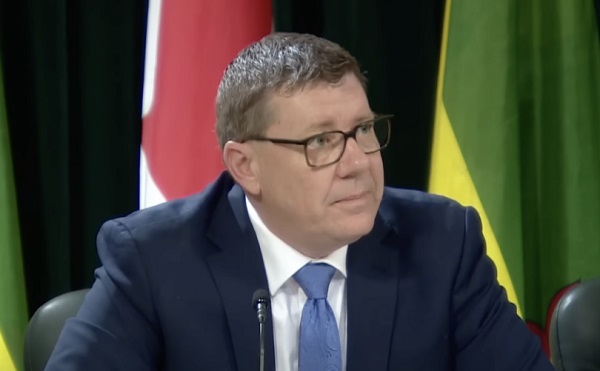
 Health1 day ago
Health1 day agoSaskatchewan woman approved for euthanasia urged to seek medical help in Canada rather than US
-
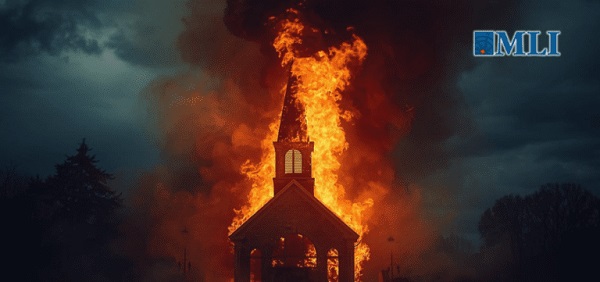
 Indigenous1 day ago
Indigenous1 day agoResidential school burials controversy continues to fuel wave of church arsons, new data suggests
-

 International1 day ago
International1 day agoFBI didn’t think it had cause to raid Trump but DOJ did it anyway
-
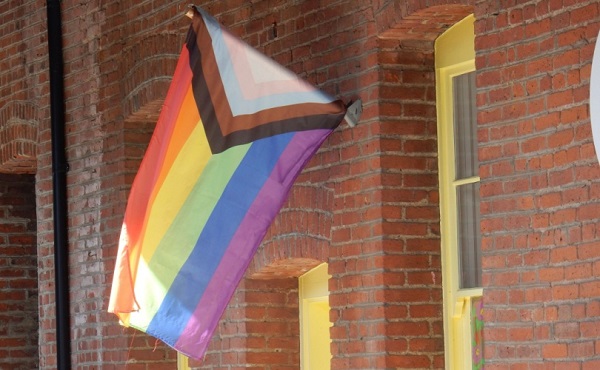
 Health2 days ago
Health2 days agoCanadian gov’t considers sharing census data on gender-confused children
-
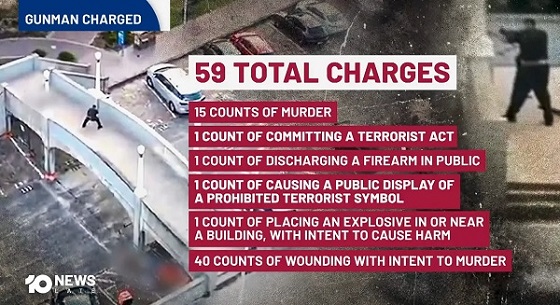
 Crime18 hours ago
Crime18 hours agoThe Uncomfortable Demographics of Islamist Bloodshed—and Why “Islamophobia” Deflection Increases the Threat
-
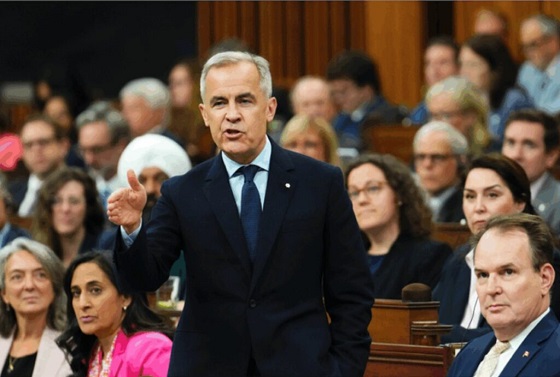
 Energy21 hours ago
Energy21 hours agoLiberals Twisted Themselves Into Pretzels Over Their Own Pipeline MOU
-

 Business2 days ago
Business2 days agoCOP30 finally admits what resource workers already knew: prosperity and lower emissions must go hand in hand




